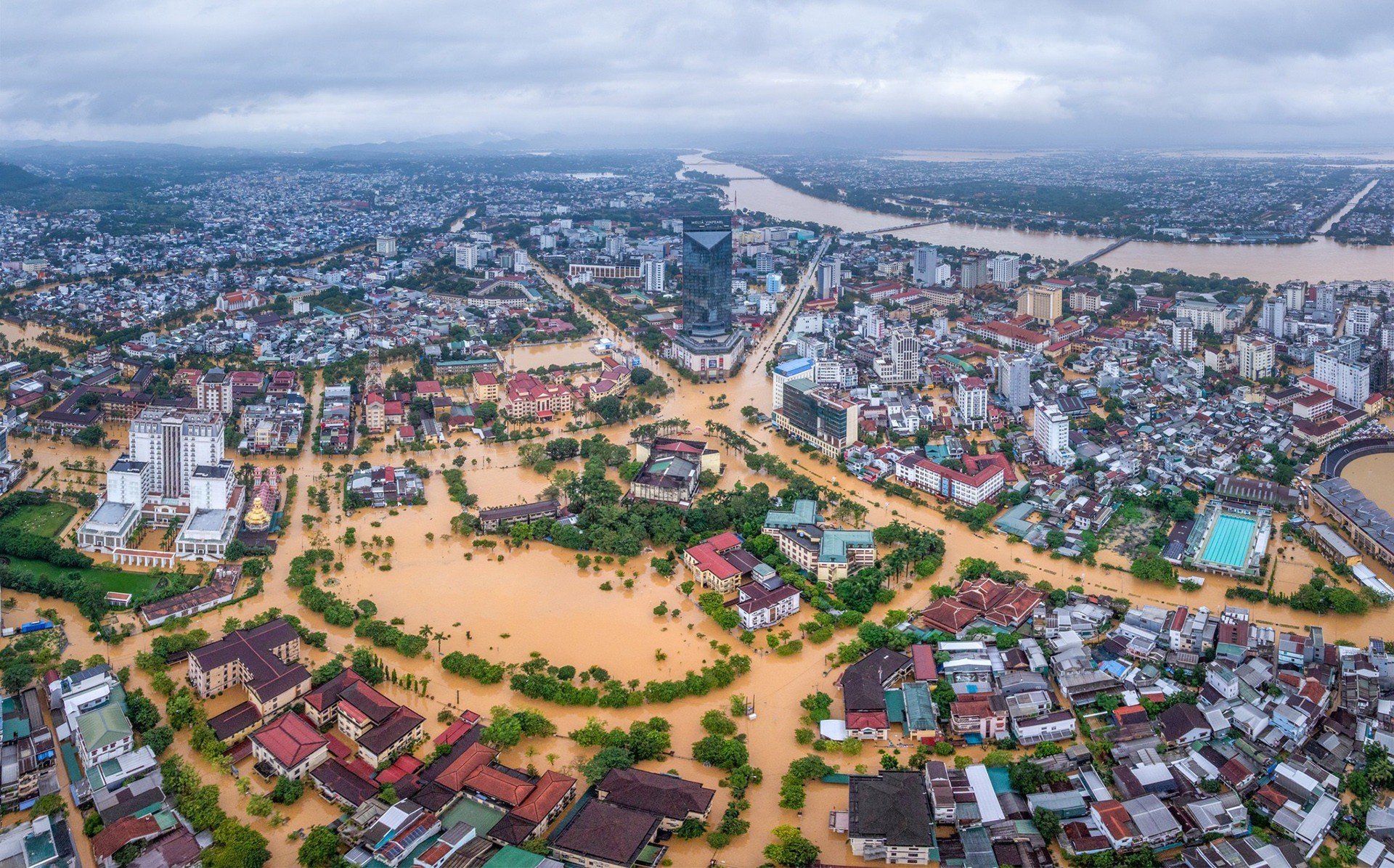
More than 44,500 houses in Hue were flooded, many inner-city roads were cut off, and traffic was paralyzed on October 27-28.
Continuous heavy rain from the morning of October 26 to 27 caused many areas in Hue City, Da Nang City and Quang Ngai Province to be submerged in floodwater.
In Hue City , since October 27, the water level of Huong River and Bo River has exceeded alert level 3, causing 32/40 communes and wards to be flooded from 1 to 2 meters deep.
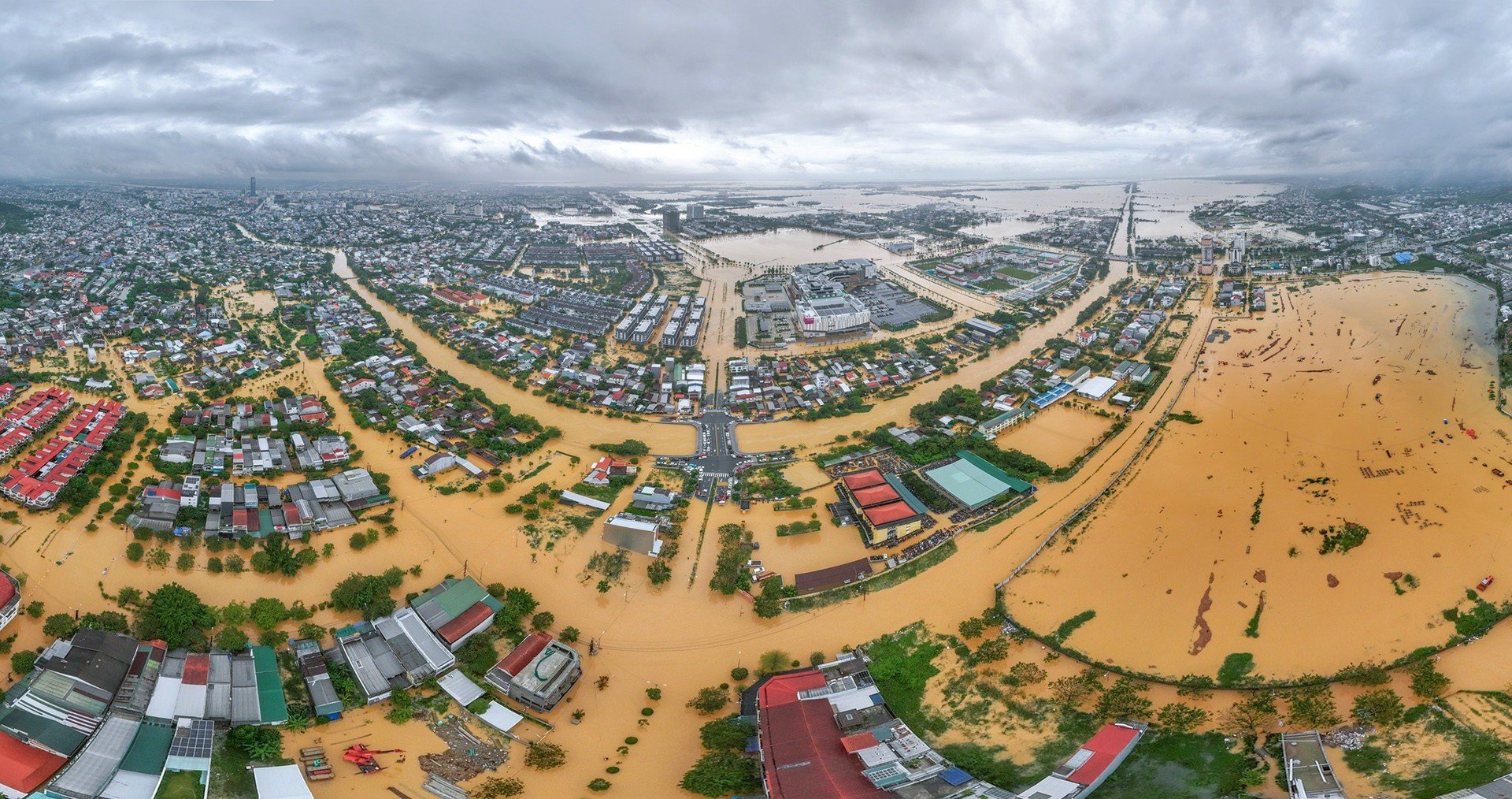
Many central streets of Hue were flooded more than a meter deep, making it impossible for vehicles to pass. Floodwater from the Perfume River also inundated the city People's Committee headquarters on Le Loi Street, causing a 0.5 meter flood.
While many low-lying areas in Hue had not yet fully drained from the previous flood, from the early morning of November 3, prolonged heavy rains caused floodwaters to rise again.
This new flood overlapped the previous one, cutting off and isolating many places. Regardless of the danger, the authorities waded through the white floodwaters to evacuate people to safety.

The flood had the largest intensity and amount of rainfall in many years, seriously affecting people's lives and urban infrastructure.
Historic floods in Hue killed 15 people, causing heavy losses in many areas such as housing, education , health care, transportation, electricity... Total damage is about 3,270 billion VND.
In Da Nang , heavy rain lasted from the morning of October 26 to October 29, causing many low-lying areas and riverside areas to be submerged in water.
Many residential areas were completely isolated, traffic was paralyzed, daily life was disrupted. People had to use boats to move around, students had to stay home from school.
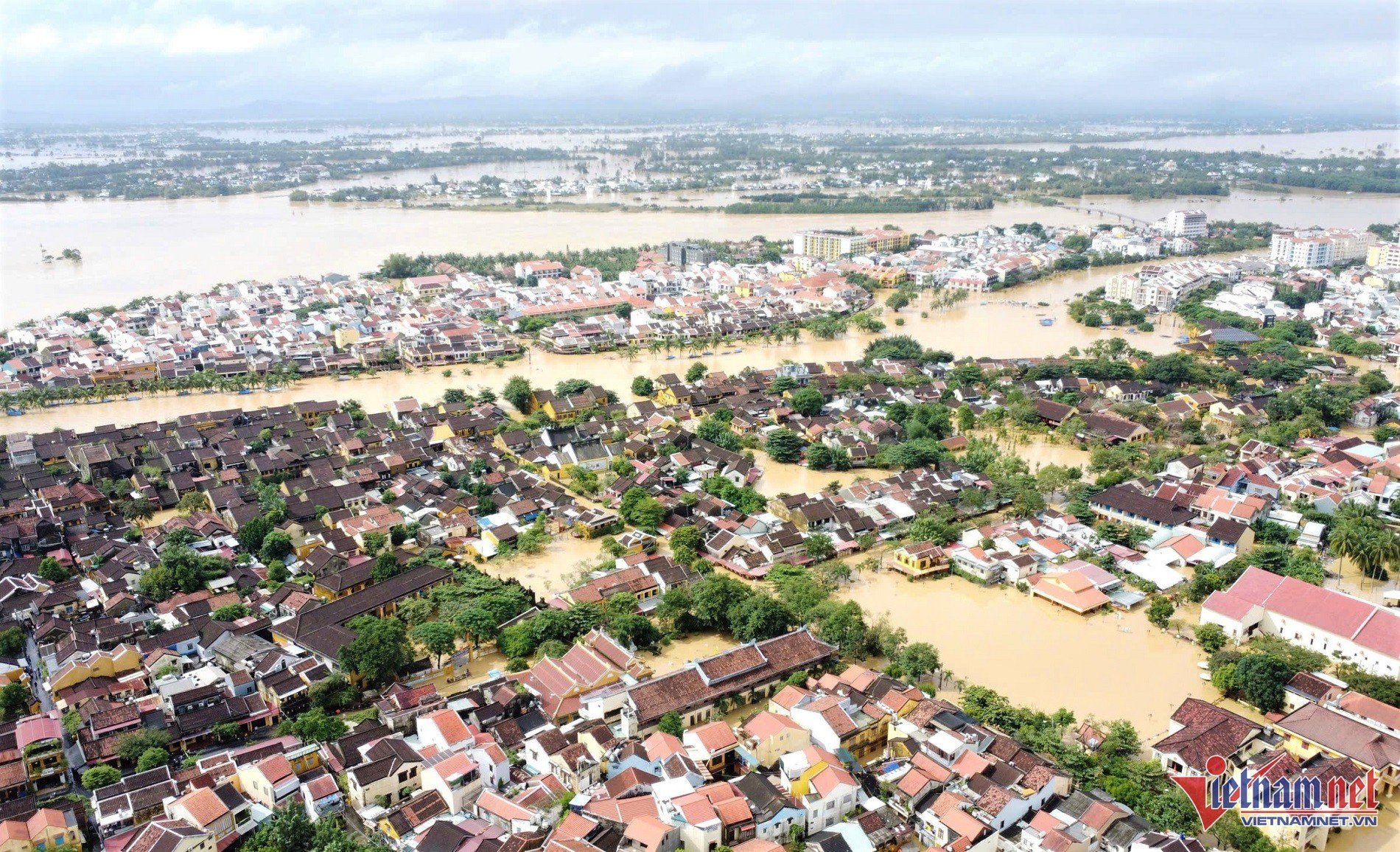
Heavy rains and floods caused many communes and wards of Da Nang to be flooded from 1 to 2.5 meters.
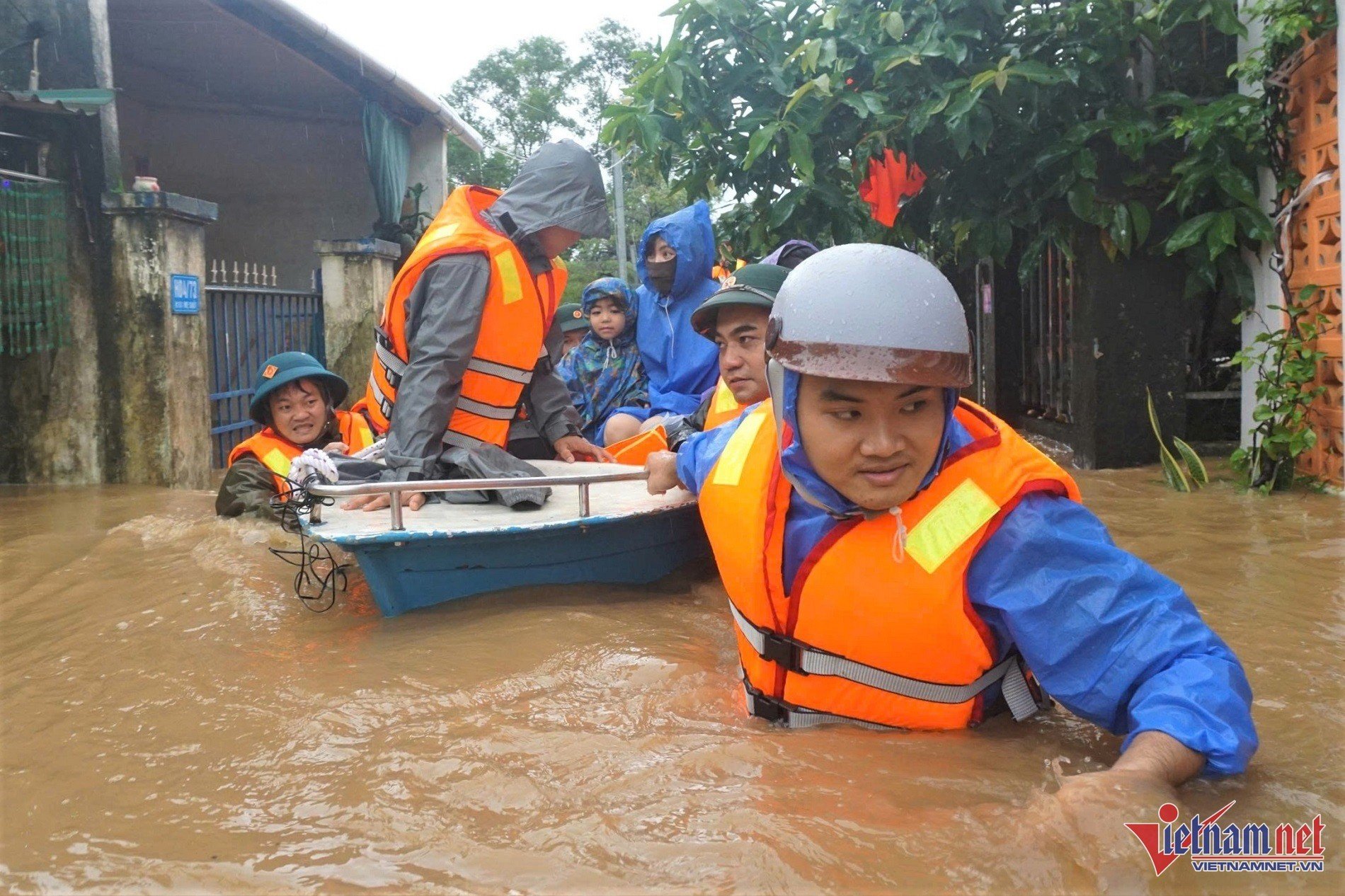
During this flood, Da Nang mobilized more than 36,000 officers and soldiers to respond to and overcome the consequences of natural disasters. The city evacuated 15,886 people from deep flooded and dangerous landslide areas.

The Japanese Covered Bridge - the symbol of Hoi An ancient town was deeply flooded.
Hoi An ancient town has just experienced a historic flood. From the early morning of October 27, floodwaters began to inundate the area and after only a few hours, they rose from 1 to 2 meters. Notably, the flood peak this time exceeded the record level of 1964 by about 12 cm, causing many streets to be deeply flooded, even in some places the water rose to the roofs.

After many days submerged in water, on the morning of October 31, the flood began to recede, Hoi An appeared in an unprecedented scene: garbage and mud covered the streets and ancient houses.
By November 3, floods on rivers in Da Nang City rose again, causing severe flooding in many low-lying residential areas.
In Hoi An, when people had just finished cleaning up after the previous flood - in many places they had not even finished cleaning up - the floodwaters came again, forcing people to "flee the flood" for the second time in just a few days.
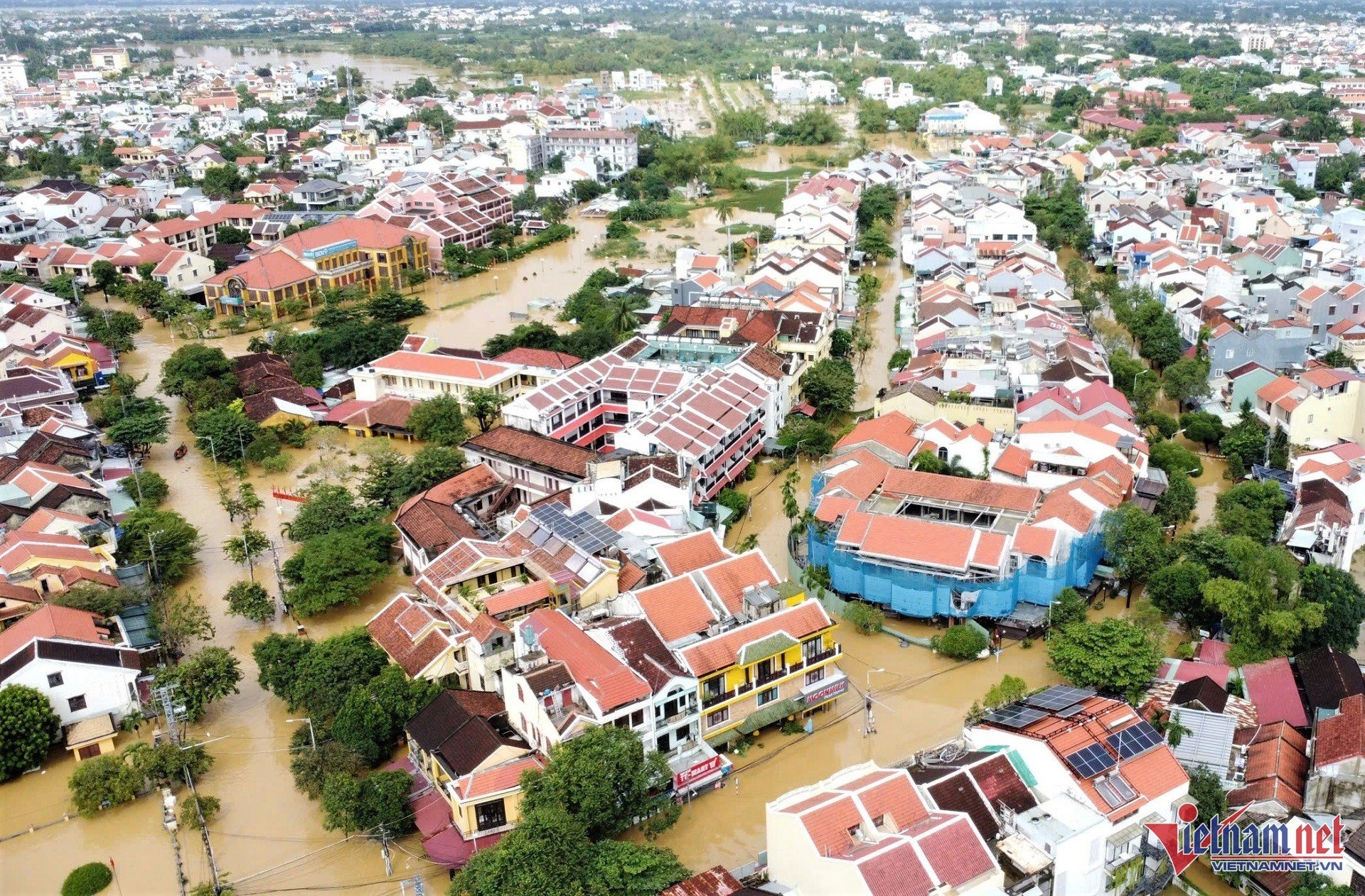
Streets along the Hoai River continue to be submerged in water, with An Hoi residential area and Hoi An market being the most heavily flooded, with some places being flooded over 1 meter deep.
Prolonged heavy rains also caused a series of serious landslides in the mountainous areas of Da Nang. Flash floods suddenly struck, burying and sweeping away dozens of houses, leaving many households penniless. Traffic infrastructure, schools, and village headquarters were also severely damaged.
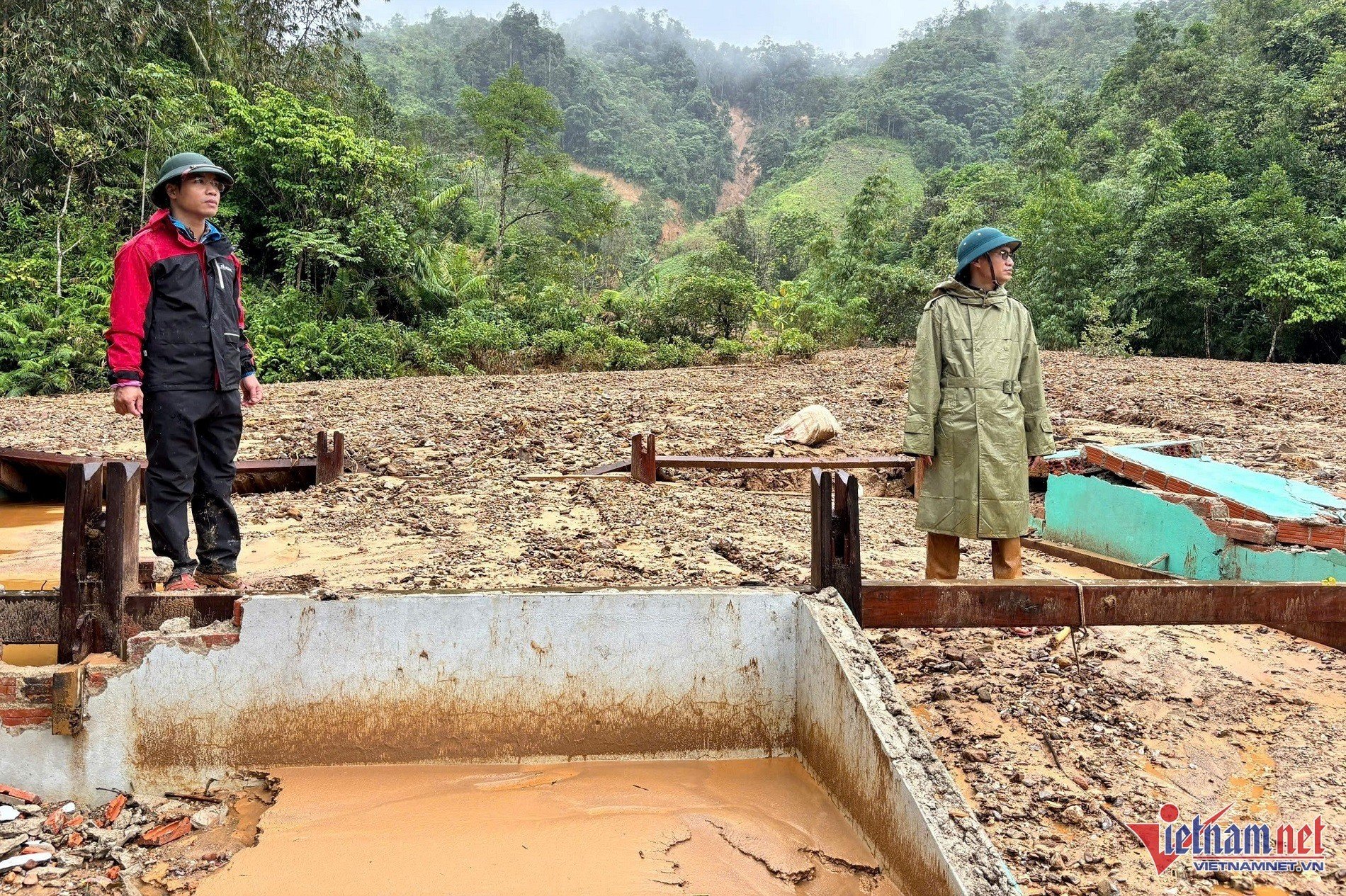
Mr. Briu Quan, Chairman of the People's Committee of A Vuong commune, said that the landslide in Ateep village was no different from the landslide in Nu village (Lao Cai).
Typically, on October 28, in Ateep village, mud from the mountainside behind suddenly collapsed, burying and sweeping away the entire residential area.
This village is located close to the Vietnam-Laos border, the landslide affected more than 10 households with about 40 people. Thanks to the authorities' early identification of the risk, all residents were evacuated in time, so there were no human casualties.
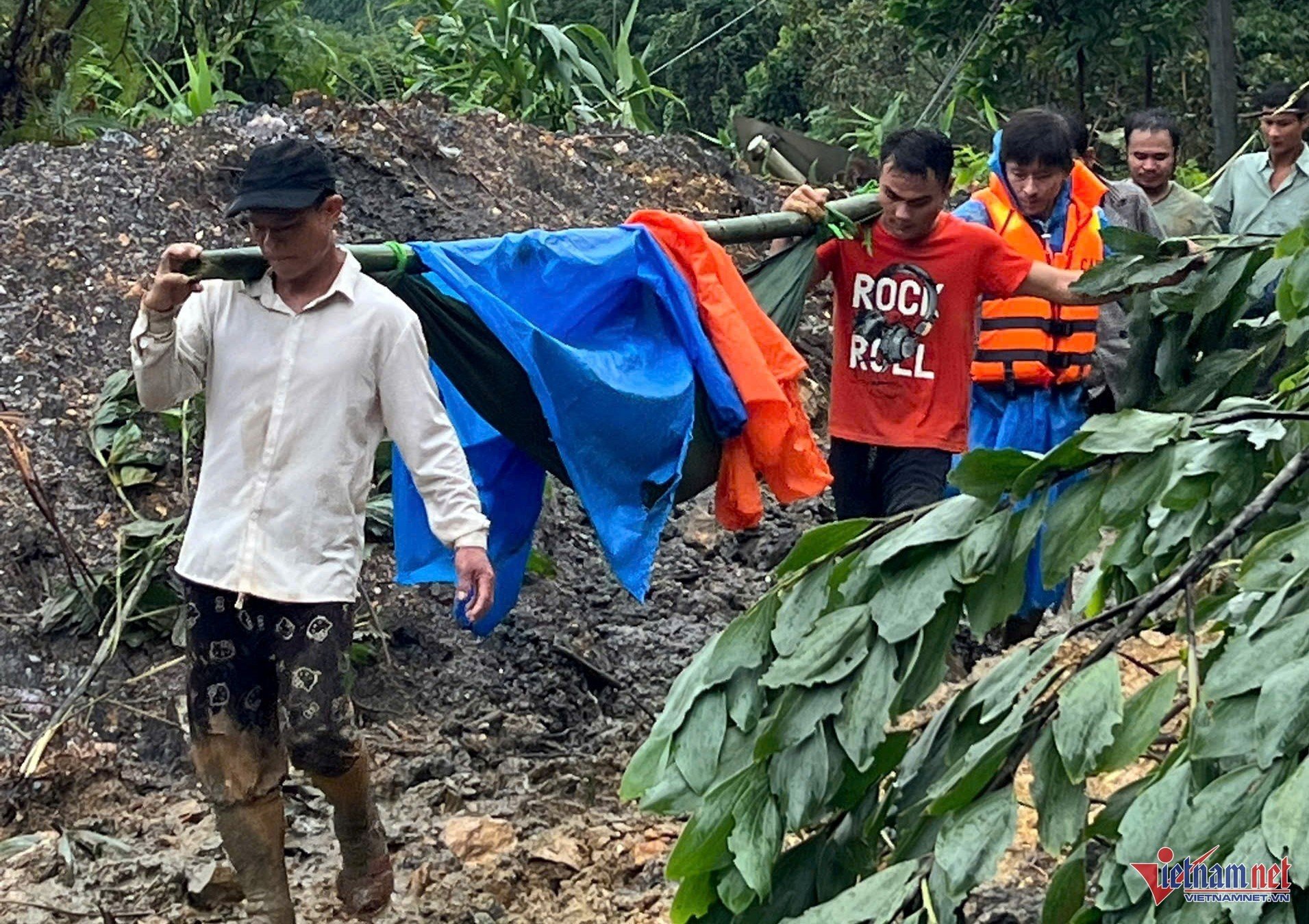
The landslide also injured many people. People had to carry the buried victims through the mud and rubble to get to the emergency room.
Notably, on the morning of November 3, in the Ong Da stream area (Thuong Duc commune), a landslide occurred that lasted nearly 2 km. At that time, a 40-year-old man, who was going to a livestock farm near Ong Da stream, was suddenly buried by rocks and soil, dying on the spot.
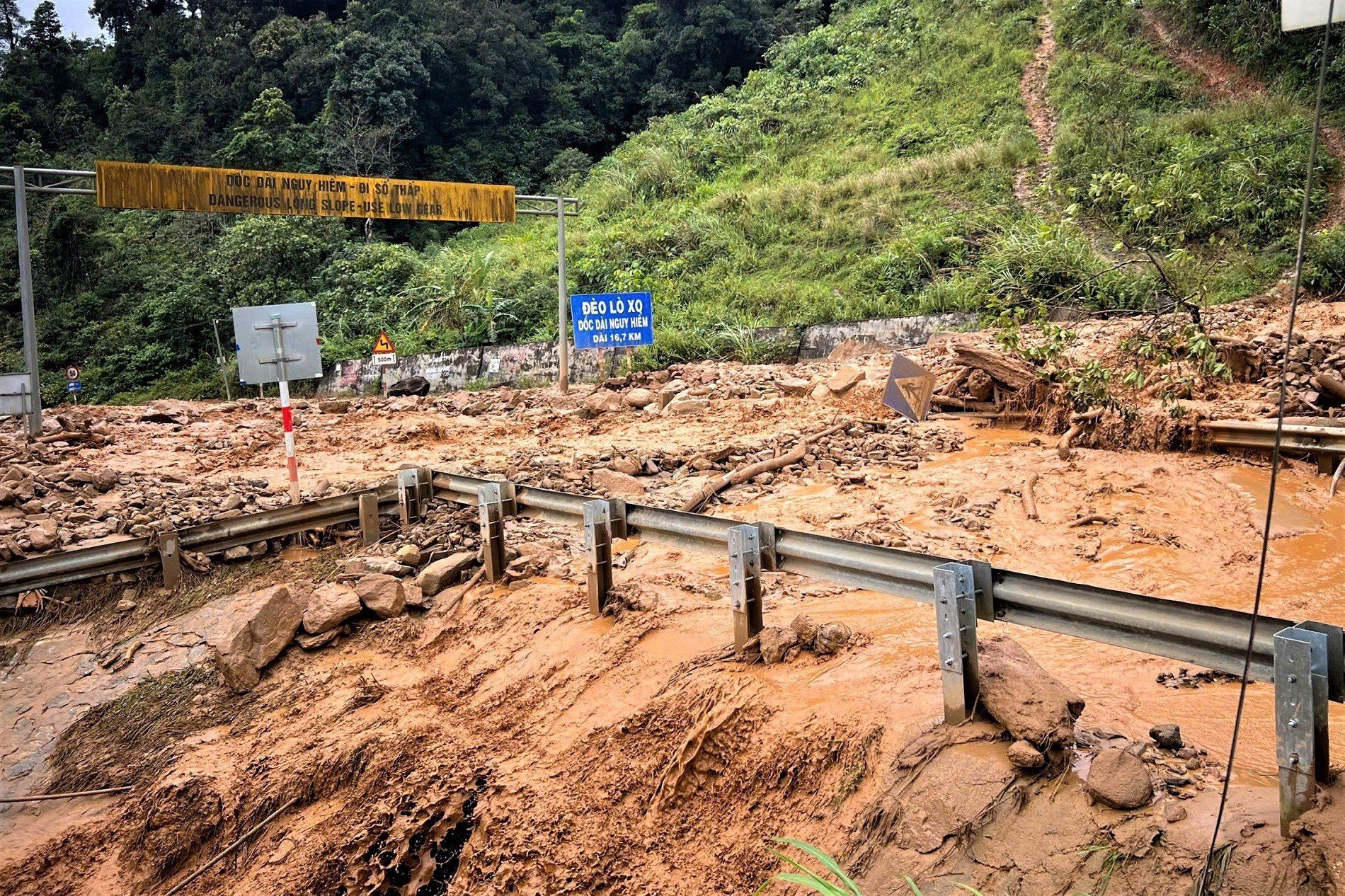
Lo Xo Pass, the section passing through Quang Ngai province, suffered a serious landslide at the end of October, causing many vehicles to be stuck for many days.
Quang Ngai province has also been severely affected by heavy rains that have lasted since late October. The rains began pouring from the morning of October 29, causing widespread flooding; more than 5,200 households in the province were surrounded by floodwaters, and many places were isolated.
Flash floods and landslides occurred in many mountainous areas, especially in Ngoc Linh and Tay Tra communes. The most serious damage was to infrastructure: a series of roads were seriously eroded, irrigation works were damaged, threatening production and people's lives.

Landslide in the early morning of October 29 behind Tra Xinh Medical Station (Tay Tra Commune) collapsed the garage, threatening the treatment area. The female employee on night duty was lucky to escape.
This flood in Quang Ngai has left 4 people dead, 2 missing, 7 injured. In addition, 48 schools, 2 medical stations and hundreds of hectares of crops and trees were damaged. The total damage is about 1,924 billion VND.

Storm No. 13 caused heavy damage to three central provinces.
On November 6, Quang Ngai, Gia Lai and Dak Lak continued to suffer heavy damage from storm No. 13 (Kalmaegi).
In Quang Ngai, the storm left one person dead and 12 injured. Nine houses collapsed in the province, and more than 1,400 had their roofs blown off or damaged. Infrastructure also suffered heavy damage: 73 roads and 13 bridges collapsed, 71 irrigation works, 14 dams and 7 medical stations in 6 communes were damaged.
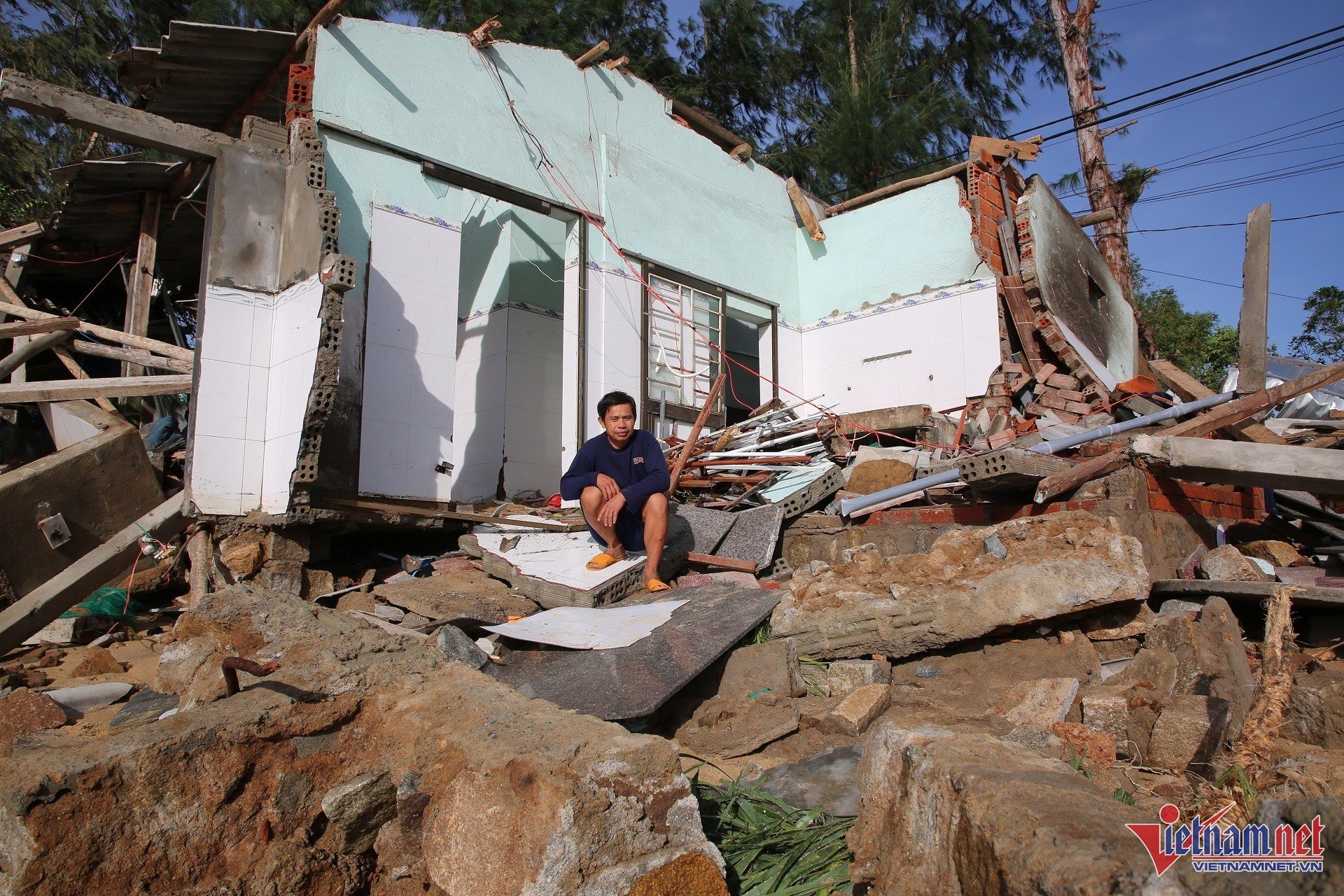
People living along the coast of Sa Huynh (Quang Ngai) were left empty-handed after a night of "running away from the storm".
The province recorded 8 landslides on mountains, river banks, and seashores, threatening the lives of hundreds of households. Total damage is estimated at more than 306 billion VND.
In particular, high tides caused by the storm collapsed a series of houses and shops along the coast of Chau Me and Thach By 2 (Sa Huynh ward), sweeping away many properties.

Xuan Thanh fishing village (Phu My Dong commune, Gia Lai) was devastated, leaving only rubble after the storm.
Gia Lai province was the most severely damaged locality because it was located right at the center of storm No. 13. The storm killed 2 people, injured 6 others and caused an estimated economic loss of more than 5,200 billion VND.
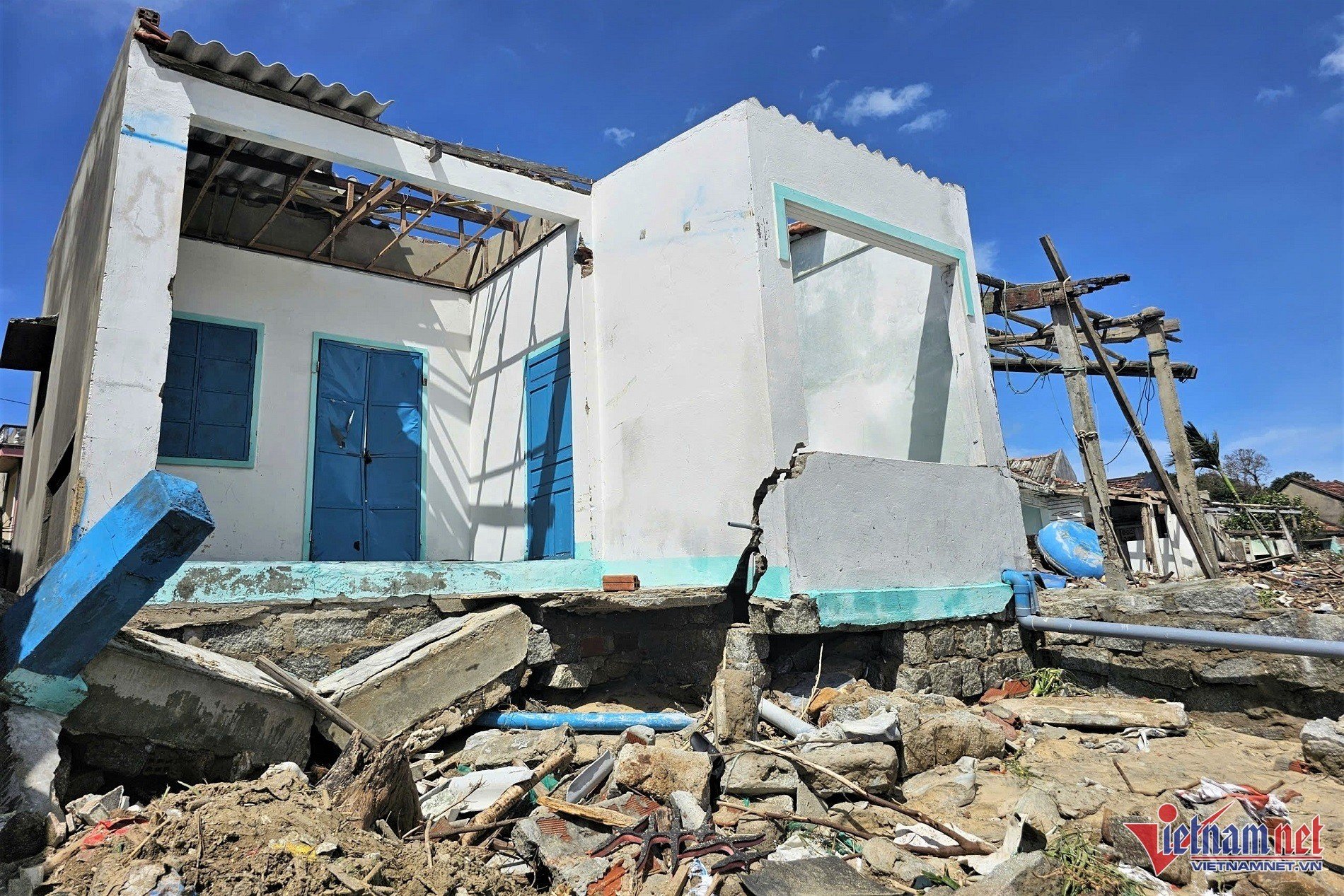
Many houses were destroyed by the storm.
The whole province had 206 houses completely collapsed, 24,751 houses had their roofs blown off or damaged; 57 boats were sunk or damaged; hundreds of aquaculture cages and thousands of hectares of rice and crops were swept away, livestock and poultry died en masse. The storm also devastated the green tree system, urban infrastructure and many public works.
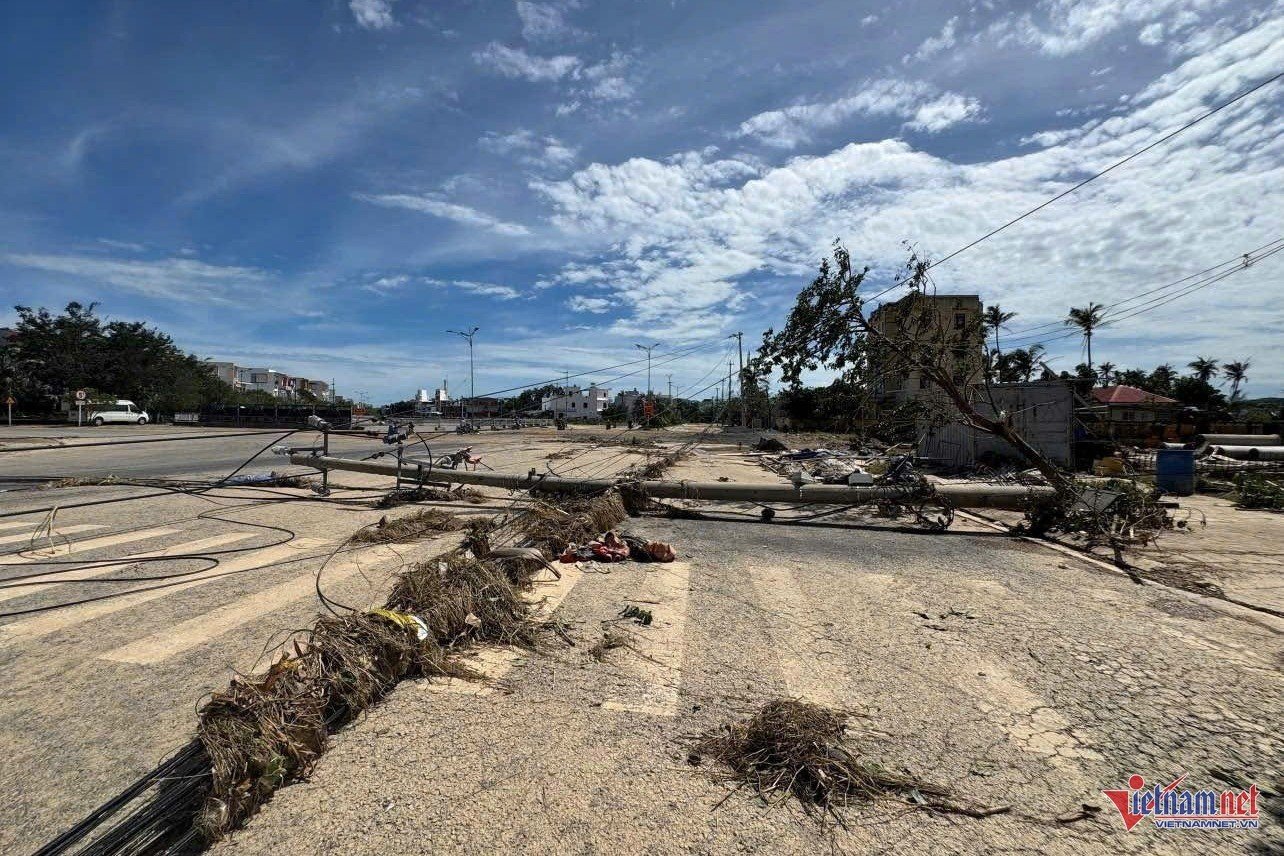
A series of electric poles in Song Cau ward (Dak Lak) were broken after the storm, causing prolonged power outages in many areas.
In Dak Lak , the storm and heavy rain caused 25 houses to collapse, more than 10,000 houses had their roofs blown off or were flooded. The whole province had 3 deaths, 6 injured. Traffic and infrastructure were damaged, agriculture and livestock were severely affected. Damage was estimated at 1,900 billion VND.
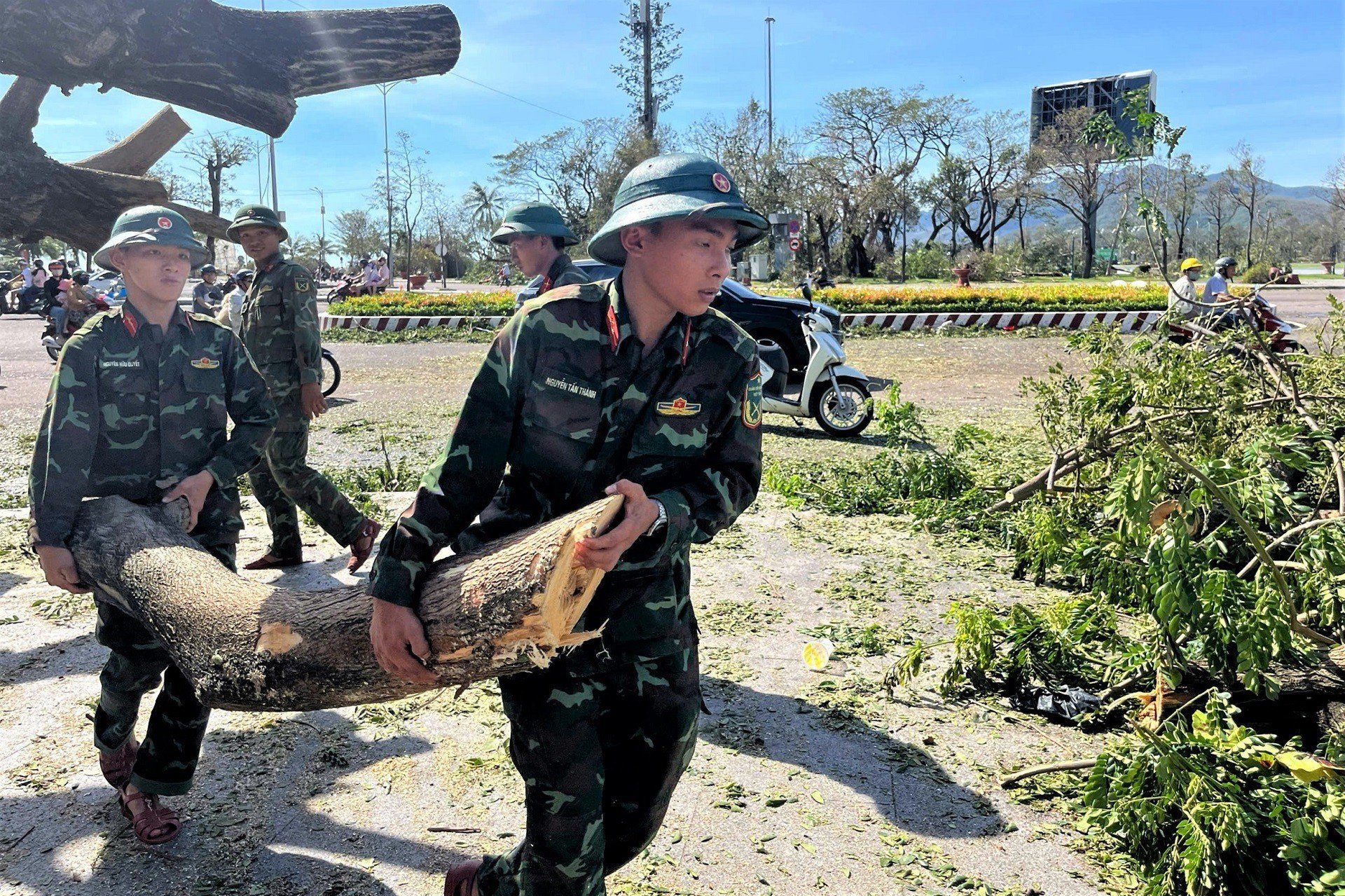
Soldiers, police and militia urgently helped people clean up, repair houses and overcome storm consequences, in order to soon stabilize their lives.
vietnamnet.vn
Source: https://vietnamnet.vn/11-ngay-dem-mien-trung-vat-lon-voi-lu-sat-lo-va-bao-tan-pha-2460891.html










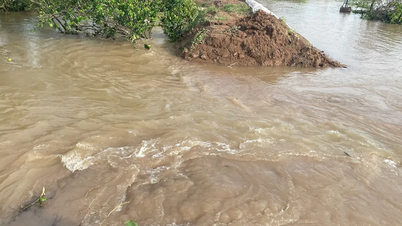











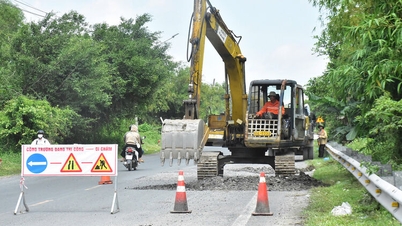


























![[Video] Hue Monuments reopen to welcome visitors](https://vphoto.vietnam.vn/thumb/402x226/vietnam/resource/IMAGE/2025/11/05/1762301089171_dung01-05-43-09still013-jpg.webp)








































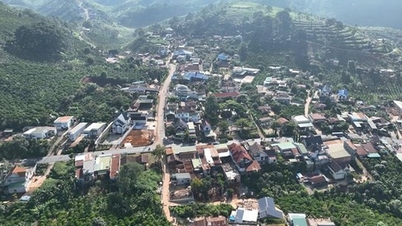







![Dong Nai OCOP transition: [Part 2] Opening new distribution channel](https://vphoto.vietnam.vn/thumb/402x226/vietnam/resource/IMAGE/2025/11/09/1762655780766_4613-anh-1_20240803100041-nongnghiep-154608.jpeg)













Comment (0)